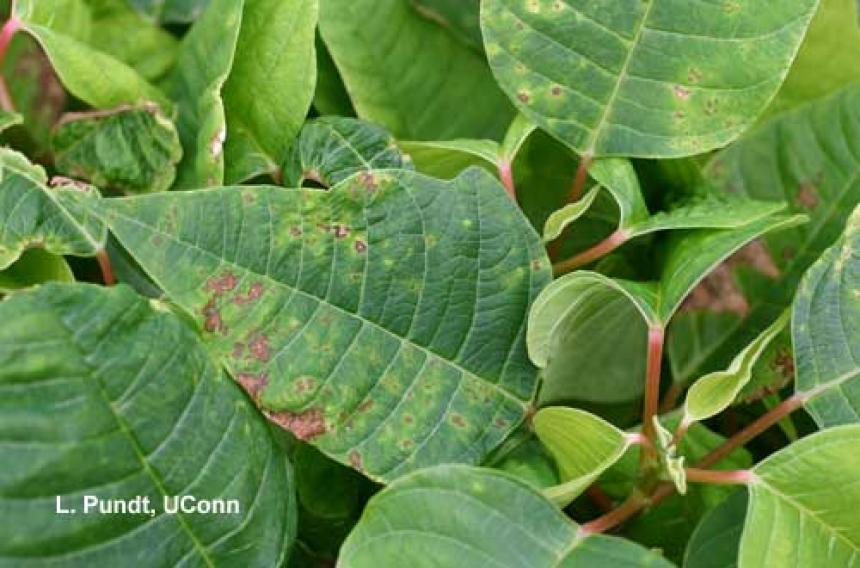Poinsettias are popular holiday plants known for their colorful red and green foliage. However, you may notice unsightly dark spots developing on the leaves, marring their appearance. What causes these blemishes, and what can you do to fix them?
What Causes Dark Spots on Poinsettias?
There are several potential culprits behind dark spots on poinsettia leaves
-
Fungal diseases like botrytis and powdery mildew leave round black/brown lesions High humidity encourages these pathogens
-
Bacterial diseases like bacterial leaf spot cause small dark spots, often with yellow halos.
-
Cold damage can lead to black collapsed areas from chilling injury Heat stress also causes scorched spots,
-
Nutrient deficiencies of nitrogen, calcium or magnesium create dead necrotic zones.
-
Overwatering damages roots, resulting in leaf spotting.
-
Chemical phytotoxicity from overuse of fertilizers or pesticides burns leaf tissue.
In most cases, improper growing conditions allow pests, disease, or physiological stress to manifest as spots.
Treating Dark Spots on Poinsettia
Taking prompt action provides the best chance to resolve leaf spot issues:
-
Prune off affected leaves to limit disease spread. Sterilize pruning shears between each cut.
-
Improve air circulation which reduces humidity and disease.
-
Apply fungicides containing chlorothalonil, propiconazole, or copper compounds. Follow all label instructions.
-
Leach excess fertilizer if chemical burn causes spots.
-
Allow soil to dry out between waterings to prevent oversaturation.
-
Move plant away from drafty areas or heat vents causing temperature fluctuations.
-
Supplement with grow lights if low natural light levels are suspected.
Rapidly implementing corrective care is critical to stop spot spread and damage.
Preventing Dark Spots on Poinsettias
Prevention is the ideal approach for avoiding poinsettia leaf spots:
-
Select disease-resistant cultivars less prone to common pathogens.
-
Inspect plants before purchase and avoid any with spots.
-
Provide bright, indirect light to reduce environmental stress.
-
Monitor humidity levels, ideally 40-60%, using a humidifier if too dry.
-
Promote continuous gentle airflow and avoid crowding plants.
-
Avoid overfertilizing which increases disease susceptibility.
-
Disinfect pruning tools to prevent spreading infections.
-
Allow soil to dry out between waterings based on moisture meter readings.
-
Water early in the day so leaves dry fully before nighttime.
-
Remove spent flowers and leaves which can harbor pests/disease.
Attentive preventive care limits stress and keeps poinsettias vigorous to resist threats from diseases.
Common Poinsettia Leaf Spot Diseases
Familiarize yourself with frequent poinsettia pathogens:
-
Botrytis blight – Rapidly expanding gray lesions in cool, humid conditions.
-
Powdery mildew – White powdery coating on leaves favored by dry air and crowding.
-
Leaf spot – Circular brown/black spots with yellow rings caused by various fungi.
-
Bacterial leaf spot – Small dark water-soaked spots surrounded by yellowing.
Knowing disease appearance and favored conditions allows early treatment when noticed.
Optimal Poinsettia Care
Growing robust plants starts with providing proper care:
-
Light – Bright indirect light. Supplement with grow lights as needed.
-
Temperature – Ideal range is 60-70°F. Avoid drafts or heat stress.
-
Water – Thoroughly water only when top inch is dry. Don’t oversaturate soil.
-
Humidity – 40-60% range. Use a humidifier or pebble tray if too dry.
-
Soil – Well-draining potting mix. Amend dense soils with perlite or vermiculite.
-
Fertilizer – Diluted balanced fertilizer every 2-3 weeks during active growth.
-
Pruning – Remove spent flowers/leaves. Trim leggy stems.
Monitoring conditions and making adjustments prevents plant stress and keeps poinsettias growing strong.
Caring for Poinsettias Year-Round
With proper care, poinsettias can be kept as attractive houseplants beyond the holidays:
-
Cut back on water/fertilizer during winter rest periods after bracts drop.
-
Prune hard in spring to encourage fresh growth. Repot if rootbound.
-
Move outdoors to a shaded spot during summer. Fertilize monthly.
-
Bring back inside in early fall. Expose to complete darkness from 5pm to 8am daily to initiate reblooming.
-
Discard plants that fail to rebloom after a second cycle or become overgrown.
Don’t resign poinsettias to the compost after the holidays! They can provide months of enjoyment with attentive care.

Fertilization: Less is More
When it comes to fertilization, think of it as a delicate dance rather than a free-for-all buffet. Over-fertilization can scorch roots faster than a hot skillet, leading to leaf damage and, you guessed it, brown spots. Stick to a fertilizer thats safe for poinsettias and follow the label like its the law. Less than .20 pounds of nitrogen per 100 square feet should keep you in the clear. And please, leave those weed-killer-laden fertilizers on the shelf unless you want to turn your poinsettia into a science experiment.
Disease and Pest Management for Brown Spots
Alternaria leaf spot often rears its ugly head with brown or blackish spots on your Poinsettia leaves. Left unchecked, its a one-way ticket to leaf-drop city. Act fast, because a prolonged laissez-faire attitude spells doom for your festive flora.
5 Reasons Poinsettia leaves turning yellow and falling off
FAQ
What do black spots on poinsettia leaves mean?
Black spots on Poinsettias often stem from fungal infections like Botrytis and Alternaria. Improve air circulation and humidity control to prevent fungal growth on Poinsettias. Identify pests early; use insecticidal soap for aphids and miticides for spider mites.
Why does my poinsettia have brown spots?
️ Environmental Stressors. Temperature fluctuations can stress your poinsettia out, causing it to break out in brown spots.Jun 17, 2024
How do you fix black spots on leaves?
How to Control Black Spot: Once black spot becomes active, the only way to control the disease and stop its spread is with an effective fungicide. GardenTech® brand’s Daconil® fungicides offer highly effective, three-way protection against black spot and more than 65 other types of fungal disease.
What does it mean when poinsettia leaves turn dark?
For poinsettias, cold damage is the likeliest cause of wilted, black leaves. They are extremely susceptible to freezing conditions, so prioritizing proper handling and protection is key.
